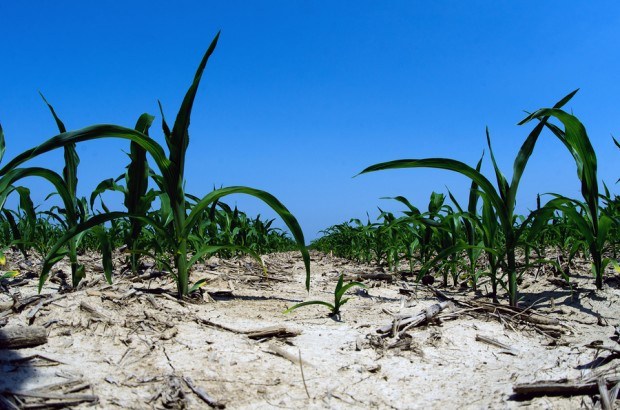The historic U.S. drought of 2012 could spread this spring to more of California and southern Florida, balancing improvement expected in the upper Midwest and parts of the South, government climate and agriculture experts said.
They also projected a warmer-than-normal summer over almost the entire United States, except for the extreme northern Plains and Rocky Mountain states and along the Pacific Coast. Even northern Alaska is expected to see above-normal temperatures.
These forecasts were part of the National Drought Early Warning Outlook produced by groups that included the U.S. Army Corps of Engineers, the National Weather Service, USDA and other agencies.
California has the greatest chance of abnormally dry weather, said David Miskus, a seasonal forecaster at the Climate Prediction Center, part of the U.S. National Oceanic and Atmospheric Administration,
Parts of California were just beginning to recover from drought at the end of last year, Miskus said. The northern half of the state had been mostly drought-free of late but now a drought seems likely to develop.
“They started out so well, in November and December they had really good strong rains, they had good snow packs in the Sierra Nevadas,” Miskus told Reuters after the outlook’s unveiling. By February, however, conditions were dry, and this is typically California’s wettest month, he said.
Last year’s drought is second only to the Dust Bowl year of 1934 as the one with the most widespread and severe dry conditions in the United States. And 67 percent of the contiguous United States are dryer than normal, and some places are still experiencing exceptional drought.
“The 2012/2013 drought has serious implications for agriculture, navigation, recreation and municipal water supplies, costing the nation at least $35 billion in economic losses,” the drought outlook said.
This long-running drought is causing “imminent concern” for the winter wheat crop from South Dakota to Texas, said Brad Rippey, an agricultural meteorologist at the Agriculture Department’s Office of the Chief Economist.
A major snowstorm now hitting the Plains states will bring much-needed moisture but might not be enough, Rippey said.
“Certainly this storm will help, and it buys us some time, but it’s the type of (weather) pattern we would need to sustain all the way up until harvest to really make a good hard red winter wheat crop,” Rippey said. Typically, winter wheat is harvested from May through July.
Another drought-driven problem is poor pasture and range conditions for livestock. Because it has been so dry, there is scant natural feed for animals, Rippey said.
“More than 80 percent of pasture and range was rated very poor to poor in Kansas and Oklahoma, and it will take more than one storm to bring the range and pasture back,” he said in a telephone interview.
However, there has been significant recovery from drought in the eastern corn belt – including much of Ohio, Michigan, Indiana and Illinois – and there is a good chance for improvement in the upper Midwest as well, Rippey said.
Also on Thursday, USDA’s chief economist forecast record U.S. corn and soybean crops this year, in part because of improved conditions in key states like Illinois.
“We have already seen some improvement in the eastern Corn Belt,” USDA’s Joseph Glauber said at the agency’s annual agricultural outlook meeting.
(Reporting by Deborah Zabarenko; editing by Ros Krasny and Cynthia Osterman)





















 Five AI Trends Reshaping Insurance in 2026
Five AI Trends Reshaping Insurance in 2026  Nearly Half of 100 Largest P/C Insurers Destroy Value: ACORD
Nearly Half of 100 Largest P/C Insurers Destroy Value: ACORD  First Atlantic Hurricane Forecast for 2026 Suggests Season Close to 30-Year Norm
First Atlantic Hurricane Forecast for 2026 Suggests Season Close to 30-Year Norm  Insurance Costs, Climate Concerns Factor Heavily in U.S. Home Buying Decisions
Insurance Costs, Climate Concerns Factor Heavily in U.S. Home Buying Decisions 





